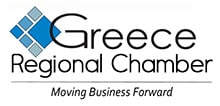By Howard Schneider
(Reuters) -U.S. central bankers have signaled they are likely to raise interest rates at their July 25-26 meeting after holding rates steady at 5%-5.25% in June. They say their decision will depend on incoming economic data. Here’s a guide to some of the numbers shaping the policy debate:
EMPLOYMENT (Released July 7, next release Aug. 4): The U.S. economy added 209,000 jobs in June, fewer than expected and part of a continued pulling back towards levels seen in the years before the pandemic, when job growth averaged around 180,000 per month from 2010 through 2019. But notable for the Fed, average annual wage growth held at 4.4% for a third month in a row rather than slowing as had been expected, and the unemployment rate fell slightly to 3.6%.
That evidence of continued strength in the labor market, even amid some gradual slowing, is likely to keep the Fed on track for another rate increase at its July 25-26 meeting.
JOB OPENINGS: (Released July 6, next release Aug. 1) Fed Chair Jerome Powell keeps a close eye on the Labor Department’s Job Openings and Labor Turnover Survey, or JOLTS, to derive what has become a key metric of the imbalance between labor supply and demand – the number of job openings for each jobseeker. During the pandemic there were nearly two jobs for every available worker. That ratio has dropped as the Fed’s rate hikes have slowed labor market demand, and in May hit its lowest level since November 2021 at around 1.6-to-1.
INFLATION (released June 30): Prices by the Fed’s preferred inflation gauge increased 3.8% in May on a year-over year-basis, the lowest reading since 2021, but underlying inflation pressures remained stuck in overdrive, with the core personal consumption expenditures index at 4.6%.
The lack of progress toward the Fed’s 2% target makes it less likely that Fed policymakers will feel comfortable holding off again on a rate hike in July.
New data on consumer prices will be released July 12. While that overall measure has come down sharply since last year’s peak, services inflation remains persistently high.
RETAIL SALES (Released June 15, next release July 18): Retail sales rose unexpectedly in May with ongoing demand even for big-ticket items like cars. Though analysts see some signs of weakness in things like rising credit delinquencies, the Fed has been watching the top-line numbers for earnest signs of a spending slowdown they feel is needed to cool inflation. If June’s auto sales data is any indication, though, a marked slowdown does not appear imminent. Last month’s annualized sales rate came in at nearly 15.7 million vehicles, well above industry-watcher estimates.
BANK DATA: Released every Thursday and Friday
To some degree the Fed wants credit to become more expensive and less available. That’s how increases in its policy rate influence economic activity. But recent bank failures threatened both unwanted broader stress in the industry and a worse-than-anticipated credit crunch. Weekly data on bank lending to customers shows loan growth is slowing. Borrowing by banks from the Fed, meanwhile, remains elevated but relatively stable on a week-to-week basis.
(Reporting by Howard Schneider; Editing by Andrea Ricci)
Brought to you by www.srnnews.com





















